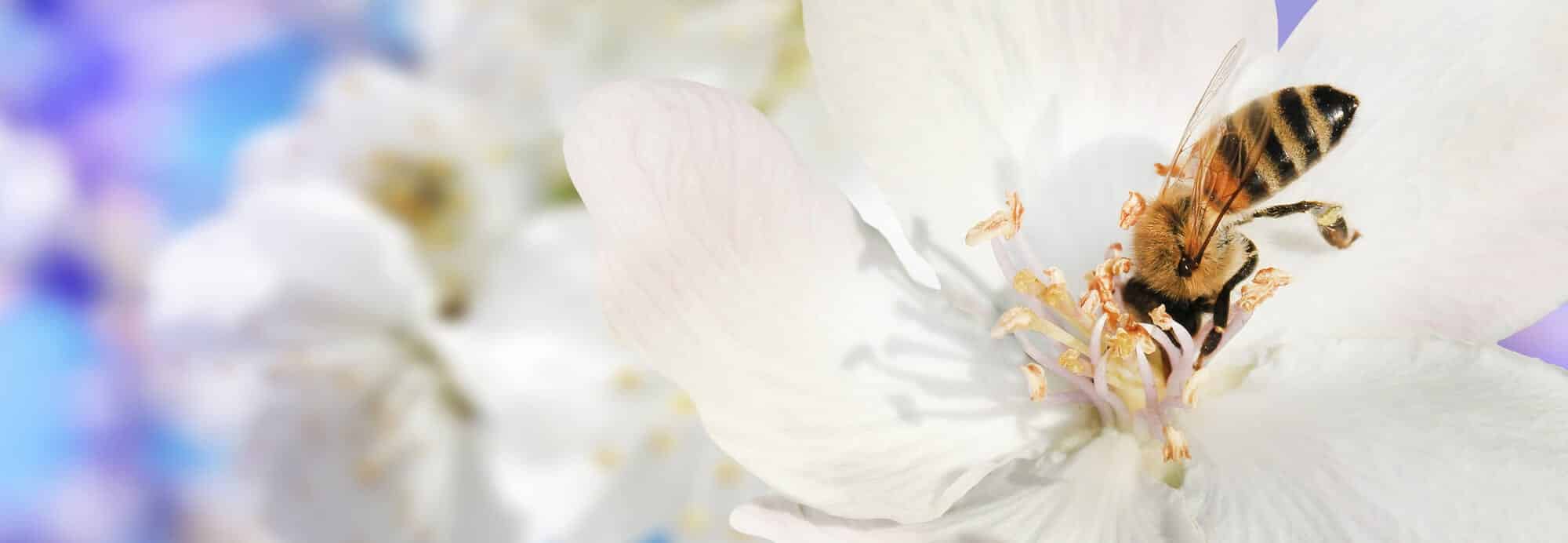
Everyone with a green thumb has heard of plants that attract butterflies to your garden and has probably planted a few of them in hopes of luring the delicately-winged guests to your garden. However, not as many people have heard of a bee garden. After one too many negative experiences with bees, people tend to avoid them at all costs, but bees are vitally important for our ecosystem. And bees need our help.
That’s why we will discuss the importance of these buzzing critters in our modern lives and how to build a garden that they will love.
Why Are Bees So Important?
Most people have a childhood memory that involves getting stung by a bee. As annoying (and painful) as that is, bees are critical to maintaining balance in our ecosystem. In fact, thanks to bees, many species of plants are pollinated in forests, meadows, and farmers’ fields. That means that much of our food and the food that animals eat in the wild would be infinitely harder to pollinate without bees.
Without bees, many plants, like fruits, vegetables, and seeds that we consume daily, would cease to pollinate and be unable to reproduce.
As a result, even though bees can sting us if we aren’t careful, we need these hard-working pollinators to keep our biodiversity healthy.
How to Create a Bee Garden
There are some ways you can begin to build an inviting and alluring garden for honey bees. You can begin to incorporate these tips into your landscaping technique today.
Use Natural or Organic Pesticides
Commercial pesticides and insecticides are one of the biggest threats to bees. Experts believe that pesticides contribute to Colony Collapse Disorder, or CCD. The honeybee colonies have decreased from 5 million to 2.5 million since the 1940s.
There are some natural pesticide suggestions if you are having issues with unwelcome critters. Here are some ideas:
- Eucalyptus Oil
- Garlic
- Peppermint
- Cayenne Pepper Combined with Garlic and Mint
Plant Bulbs in the Fall
Most bees are active from March to September. March can still be quite cold in Minnesota. It is usually just the queen bee that survives the winter, it can be a challenge for the earliest worker bees looking for a flower to pollinate in the spring. That is why you can help the bees by planting bulbs in the fall that will sprout in the early spring and give the bees food before everything else has grown.
Plant Purple Flowers
Bees are not known for their sharp vision, but they can see the color purple, and they are drawn to it. This list of summer flowers for Minnesota has several lovely violet options to try. However, bees like other colors, too, so don’t fret if you can’t plant something purple.
Provide Single-Petal Flowers
Single-petal flowers are more accessible for bees versus double petal flowers. Double petal flowers tend to have less nectar, and they are harder to land on and gather pollen. Single-petal, pollen-rich flowers are often the ones with a richer scent. So, allergy sufferers beware!
Create a Bee Bath
Imagine a birdbath, but for tiny, buzzing bees. Bees like water, and they usually find small amounts of it on leaves, in the dew, and even little puddles. You can add a little bowl of water or a birdbath. Don’t forget some pebbles and twigs, so the bees have a spot to land.
Add a Bee House
Bee houses are a simple and attractive way to draw native bee species to your garden. Build a native bee house to take advantage of more blossoms and more bountiful harvests! Bee houses are meant to boost the pollination of your garden plants by attracting super-pollinating solitary bees, such as mason bees and leafcutter bees.
Get a Little Wild
Consider allowing at least a section of your yard to grow into a more wild space where you don’t spray pesticides, cut down the weeds, or keep everything under absolute control. Use the area to lure bees to your yard by growing local plants. Bees love wildflowers growing in a cottage garden-vibe, and there are many flowers perfect for a Minnesota summer. Try it and see how many buzzing friends come to call.

Don’t Forget Shrubbery
It’s easy to remain hyper-focused on flowers when it comes to creating a bee-friendly space, but shrubs have an important role, too. Shrubs are often simpler to maintain than flowers, hardy for Minnesota winters, and they also produce delicate blossoms that bees love.
Invite Trees to the Party
Trees are many times overlooked when it comes to bees, but the truth is that bees love the spring blossoms on trees. Fruit trees can be vibrant and fragrant, attracting many bees. Think Crabapple or Plum trees when it comes to sturdy options that will survive all Minnesota seasons.
Your Partner in Landscaping
Architectural Landscape Design is your partner in creating an inviting garden home for our tiny pollinating friends. We understand the role bees play in our local biodiversity and will work with you to create the best garden for these often misunderstood insects. We will walk you through your options, and where to place them for the highest impact. We have worked with hundreds of homeowners around the Twin Cities, and we are not happy until you are.
